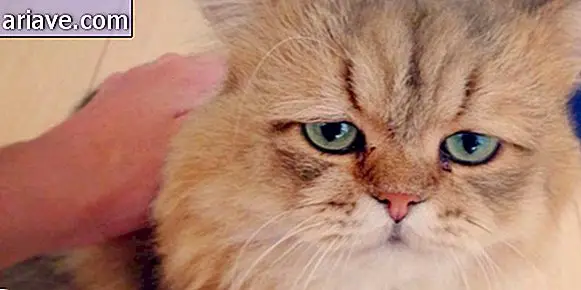Frozen in Time: 5 Prehistoric Beings Preserved in Amber
As you may recall, in the 1993 movie Jurassic Park, John Hammond, the friendly little owner and owner of the paradise island on the Costa Rican coast that becomes a dinosaur-filled park, clones these animals from the DNA collected. insects preserved in amber for millions of years.
Well, this thing of cloning prehistoric animals from animals that sucked their blood and ended up being frozen in time, at the moment, is only possible in fiction. However, there are copies of insects and other animals preserved in amber by the way, that is - and soon you can check out five of them.
Calm calm!
But ... before we show you the little creatures, let us explain what exactly amber is and how it works as a "preservative" jurassic. In case you don't know, amber is nothing but that super sticky resin of the trees, only fossilized. For, in some cases, drops of this substance eventually captured unsuspecting creatures and kept them intact for millions and millions of years.

According to Catie Leary of the Mother Nature Network portal, the oldest known amber fragment is remarkably 320 million years old and dates from a geological era called Carboniferous. During this time, the most evolutionarily advanced creatures on earth were amphibians - and the supercontinent Pangeia had not yet formed. And now, let's go to the preserved animals?
1 - Spiders
Although the spider below seems completely common, it was caught in amber 99 million years ago, in the middle of Cretaceous. The fragment of the image was found in a mine in Burma and belongs to a family known as Tetrablemmidae, which still roams the planet to this day.

The difference with current specimens is that, in the case of the prehistoric spider, the prey was more exaggerated. According to scientists, the specimen is a male, and the species was named Electroblemma bifida . Below you can see another prehistoric spider that has also been preserved in amber:

2 - Ants
The little ant you can see next, although very similar to the little bugs we see in today's gardens, was caught in amber between 40 and 50 million years ago!

Below, some more ants preserved in amber forever:

3 - Insect
Well, dear reader, mosquitoes have been buzzing here on Earth for a long time - and the specimen you can see below dates from the beginning of the Miocene, a geological period from about 24 to 5 million years ago.

4 - Beetle
The following little monster, caught in amber no less than 50 million years ago, is a little bug.

5 - Gecko
Don't think it was just the prehistoric spiders and insects that were caught by sticky drops of sap. The poor gecko you can see below, poor thing, was caught in amber during the Oligocene - a geological age between 36 and 23 million years ago.

Bonus
A dramatic moment
In fact, the amber fragment you will see below not only served to preserve two different animals, but also froze a dramatic scene for 100 million years: a parasitoid wasp that got caught in a spider web - and the arachnid about to attack your prey. Look:












